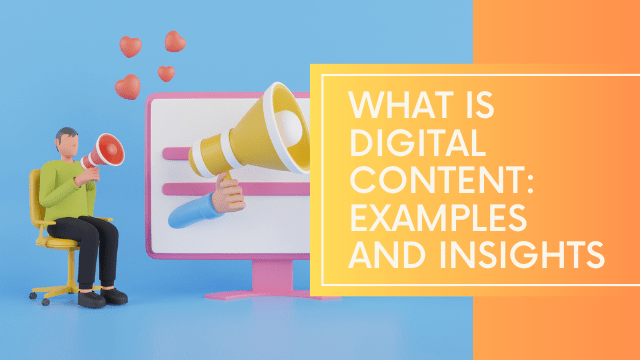Digital content has become an essential part of modern marketing and communication strategies. From infographics to videos, digital content plays a pivotal role in engaging and informing audiences in the digital space. In this article, we will explore the diverse landscape of digital content, providing examples and insights into the strategies that make them effective.
1. Infographics
Infographics are visual representations of information, data, or knowledge intended to present complex information quickly and clearly. They are an effective way to communicate complex data in a visually appealing and easy-to-understand format. Infographics can be used to explain complex concepts, provide statistics, or illustrate a process.
2. Memes
Memes are humorous images, videos, pieces of text, etc., that are copied, often with slight variations, and spread rapidly by internet users. Memes are a popular form of digital content that can be used to engage audiences and create a sense of community around a brand or topic.
3. Videos
Videos are recordings, animations, or films that can be shared digitally and viewed by an audience. Videos are a versatile form of digital content that can be used to educate, entertain, or promote a product or service. They can be shared on social media platforms, websites, or through email marketing campaigns.
4. Long-form Content
Long-form content refers to in-depth, comprehensive content pieces that provide detailed information on a specific topic. Long-form content can take the form of blog posts, whitepapers, or e-books. They are an effective way to provide value to audiences and establish thought leadership in a particular industry.
5. Blogs
Blogs are regularly updated websites or web pages, typically run by an individual or small group, that are written in an informal or conversational style. Blogs are an effective way to provide value to audiences and establish thought leadership in a particular industry. They can be used to share insights, provide commentary, or promote products or services.
6. Images
Images are visual representations or illustrations that can be shared digitally to convey information or evoke emotions. Images can be used to support written content, create social media posts, or provide visual interest on a website.
7. Newsletter
Newsletters are periodical publications sent by email to subscribers, containing news, updates, or promotional content. Newsletters are an effective way to keep audiences engaged and informed about a particular topic or brand. They can be used to promote products or services, share insights, or provide exclusive content.
8. Audio Content
Audio content refers to digital recordings, podcasts, or music that can be shared and consumed by an audience. Audio content is a versatile form of digital content that can be used to educate, entertain, or promote a product or service. They can be shared on social media platforms, websites, or through email marketing campaigns.
Strategies for Effective Digital Content
Creating effective digital content requires a strategic approach that focuses on providing value, personalization, and consistent effort. Here are some strategies for creating effective digital content:
1. Know Your Audience
Understanding your audience is essential for creating effective digital content. Knowing their interests, preferences, and pain points can help you create content that resonates with them and provides value.
2. Provide Value
Providing value to your audience is essential for creating effective digital content. Whether it’s through educational content, entertainment, or exclusive offers, providing value can help establish trust and loyalty with your audience.
3. Personalize Your Content
Personalization is key in digital content. Addressing your audience by their first name and providing content that is tailored to their interests and preferences can create a sense of connection and sincerity.
4. Be Consistent
Consistency is essential for creating effective digital content. Regularly updating your website, social media platforms, or email newsletters can help keep your audience engaged and informed.
5. Use Analytics
Using analytics to track the performance of your digital content can help you understand what works and what doesn’t. Analytics can provide insights into audience engagement, content performance, and conversion rates, allowing you to refine your digital content strategy over time.
In conclusion, digital content encompasses a wide range of formats and mediums that are designed to inform, entertain, and engage audiences in the digital space. From infographics to videos, digital content plays a pivotal role in modern marketing and communication strategies. each serving a unique purpose in engaging and informing audiences in the digital space. From visual representations like infographics to long-form content and audio recordings, the digital content landscape offers a multitude of options for creators and marketers to connect with their target audience. Understanding the diverse nature of digital content is essential for crafting effective communication and marketing strategies in the digital age. By understanding the diverse nature of digital content and implementing effective strategies, individuals and businesses can effectively engage and inform their target audience.

